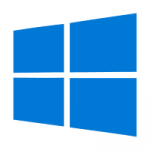 The first Patch Tuesday for 2020 arrives with the long-planned but still inconvenient end of meaningful support for Windows 7.
The first Patch Tuesday for 2020 arrives with the long-planned but still inconvenient end of meaningful support for Windows 7.
The venerable Windows 7 still runs on about a quarter of all PCs worldwide. Sticking with Windows 7 was — and continues to be — a conscious decision for many users, made because Windows 8 and 10 were problematic for a variety of reasons.
Microsoft killed support for Windows XP on April 8, 2014, but still released updates for that O/S on a couple of occasions when a security vulnerability was so severe that it seemed likely to cause massive problems if unpatched. Microsoft will probably do the same thing for Windows 7, but it’s not a good idea to rely on the goodwill of any large corporation.
So, if you’re running Windows 7, what should you do? You can upgrade to Windows 8.1, which will buy you some time, until its support ends on January 10, 2023. Or you can stop resisting and make the move to Windows 10. Many of the initial problems with — and objections to — Windows 10 have now been addressed, making it somewhat less unpalatable. Microsoft offers additional guidance on the Windows 7 support ended on January 14, 2020 page on the Microsoft support site.
Another sensible option would be to switch to Linux. There are now Linux distributions that feel a lot like Windows, which can ease the transition. The main problem is software. But even if the software you use has no Linux version, you can still run an older version of Windows in a virtual machine on your Linux computer. That’s not too helpful for high-end games, however.
Back to our regularly scheduled updates…
There are thirty-nine updates (and associated bulletins) from Microsoft this month, addressing fifty vulnerabilities in Windows, .NET, Internet Explorer, and Office. Eight of the updates are flagged with Critical severity.
Although there are other ways to obtain the updates, by far the simplest method is to use Windows Update, which is found in the Windows 10 settings, or the Control Panel in older versions.
Update 2020Jan15: One of the vulnerabilities addressed in yesterday’s updates was reported to Microsoft by the NSA. While there’s disagreement about the seriousness of the vulnerability, this is notable in that the NSA previously wasn’t interested in sharing its discovered vulnerabilities. Lack of NSA cooperation led to the WannaCry ransomware nightmare in 2017. Brian Krebs has more.
While it’s generally a good idea to cross your fingers and install all available Microsoft updates, or at least allow them to be installed automatically, some Windows 10 users have grown wary of updates, and configured Windows Updates to be delayed. The actual risk from this vulnerability is mostly for Windows Server 2016 computers that are exposed to the Internet, and Windows 10 computers normally used by people with administrator permissions.
Update 2020Jan17: There’s more useful information about the NSA-reported vulnerability from Ars Technica, and SANS. SANS has created a web page and download that you can use to test your computers for this vulnerability.
 boot13
boot13 Adobe released updates for several of its software products on Tuesday, but the only one likely to be installed on your computers is the ubiquitous Acrobat Reader DC, Adobe’s free PDF file viewer.
Adobe released updates for several of its software products on Tuesday, but the only one likely to be installed on your computers is the ubiquitous Acrobat Reader DC, Adobe’s free PDF file viewer.
 The new version of Flash is
The new version of Flash is  Microsoft is finally waking up to what we’ve all been saying since before Windows 10 was released: forcing operating system updates on users is not a good idea. Amusingly, they are presenting their findings and announcing related changes as if these things were previously unknown to the world of computing.
Microsoft is finally waking up to what we’ve all been saying since before Windows 10 was released: forcing operating system updates on users is not a good idea. Amusingly, they are presenting their findings and announcing related changes as if these things were previously unknown to the world of computing.